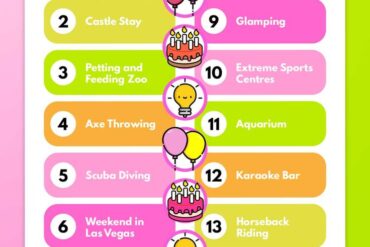Grasping the AFL Positions: The Ultimate Guide for Parents
Hey there, wonderful parents!
Are you ready to embark on an exciting Aussie Rules journey? Whether your little champ is just starting in Auskick or joining a junior league, understanding the game’s positions is vital! Australian Football League (AFL) is not just thrilling, but it’s packed with a rainbow of positions that each carry their own unique responsibilities. Let’s lace up and dive into the positions that make AFL the captivating spectacle it is!
What is AFL and How Does it Work?
Before we dive into positions, let’s get a quick refresher on AFL basics. Standing for Australian Football League, AFL is a fast-paced, contact sport that combines aspects of soccer, rugby, and even a bit of basketball agility. Played on an oval-shaped field, two teams of eighteen players each vie for victory by scoring points when the ball is kicked between the goalposts.
The Positions on the AFL Field
Now to the heart of the matter! AFL positions can be broadly categorized into three main areas: forwards, midfielders, and defenders. Additionally, there’s the ‘ruckman’ who plays a unique role during stoppages in play. Let’s break these down further:
Forwards
These are the goal scorers, the ones who light up the scoreboard and send the crowd into a frenzy. They’re quick, they’re agile, and they have that magnetic relationship with the football. Here are the key positions in the forward line:
- Full Forward (FF) – This player is your primary goal-kicker, always on the prowl in front of the goal to snatch the ball and score.
- Centre Half Forward (CHF) – They play slightly further out from goal and are typically taller and stronger, aiding in marking the ball and dishing off to the goal-sneaks.
- Pocket Forwards (FP / FF) – Positioned on either side of the Full Forward, these players are the opportunistic scorers. Quick and crafty, they can manoeuvre through tight spaces.
Midfielders
Think of midfielders as the endurance runners of the team. These guys are everywhere, involved in both defensive maneuvers and attacking drives. Their main jobs include:
- Centre (C) – They are central to everything, coordinating moves, linking the defenders and forwards, and often kick-starting the attacks.
- Wingmen (W) – Positioned on the sides of the centre, wingmen cover the length of the field and are crucial in transferring the play from defense to attack.
- Rover (R) – Also known as the ruck rover, this player is the ruckman’s right hand, ready to receive the ball from contests and move it forward.
Defenders
These are the guardians of the goalposts, the stalwart protectors who deny the opposition’s scoring attempts. Here’s who you’ll find standing firm in the backline:
- Full Back (FB) – The last line of defense, they’re the ones directly stopping the full forward from scoring and are often the players with the most effective defensive tactics.
- Centre Half Back (CHB) – These players intercept marks, diffuse attacking plays, and launch counter-attacks.
- Back Pockets (BP) – Flanking the Full Back, these players assist in shutting down the pocket forwards and clearing the ball from dangerous areas.
Ruckman
And finally, the ruckman. They’re the tall timber of the team, the jumpers and aerial specialists who contest the ball during throw-ins and ball-ups, aiming to tap it down to their rovers and midfielders.
Understanding these roles not only brings parents closer to the game but gives them an insight into what their child might be aspiring to on-field. By appreciating the positions and mechanics of AFL, parents are better equipped to cheer on their aspiring athletes and support their development in this dynamic and thoroughly Australian sport!
Stay with us as we continue to uncover the thrills of AFL and how each position comes into play – you’ll become the sideline expert in no time! The synergy of each player in their respective role is a dance orchestrated by years of tradition and the modern evolution of the game, offering a place for every skill set and body type.
Now that we’ve set the stage with a broad view of the AFL field, in our next section, we’ll zoom in on strategies, skills required for each position, and how players can hone their abilities to excel in their roles. From the gutsy defenders to the flashy forwards, let’s get ready to rally behind our little legends as they find their position and make their mark!
Keep smiling and cheering, parents! Your support is the backbone of your child’s sporting journey. Stick around as we delve deeper into the exciting world of AFL positions!

Five Essential Tips for Parents Preparing Their Kids for AFL Positions
Let’s pivot to some hands-on, practical tips to get your kids AFL-ready. Knowing about the positions and roles is one thing, but how do you prepare your young star for the field? Here’s what you need to know:
1. Fitness and Conditioning
Regardless of the position, AFL requires a high level of fitness. Encourage your kid to be active, developing their endurance, speed, and strength. Activities like running, swimming, and cycling are fantastic for building cardiovascular endurance, while body-weight exercises can help build the strength needed for those powerful kicks and tackles.
2. Skills Training
Each AFL position demands a unique set of skills. For example, forwards need to have sharpshooting accuracy, while defenders must master the art of tackling and marking. Practicing these skills through drills and mini-games can greatly enhance their on-field performance. So, grab a ball and have a kick around in the park, focusing on the basic skills of kicking, handballing, marking, and bouncing.
3. Understanding the Rules
Support your child in learning the rules of AFL. This knowledge is crucial and can be the difference between a good player and a great player. This doesn’t mean they need to memorize the rulebook, but a general understanding of how the game works, including fouls and penalties, helps them play smarter.
4. Positional Awareness
Once your child shows an inclination towards a particular position, help them develop an understanding of that role. Watching games together and discussing the responsibilities of different positions can provide invaluable tactical insights. Furthermore, encourage them to observe the positioning and movements of professional players during matches.
5. Teamwork and Communication
Emphasize the importance of teamwork. AFL is a team sport, and understanding how to communicate and work with teammates is as important as individual skill. This can be fostered through team practice, sportsmanship, and leadership activities.
Armed with fitness, skills, rule knowledge, positional awareness, and a team-first attitude, your young AFL enthusiast will be well on their way to enjoying the game and achieving their personal best on the field. Getting involved at the local club and encouraging consistent practice are also key strategies in nurturing their passion for AFL.
Now that you’ve got a game plan to support your little athlete, let’s continue exploring the exciting nuances of AFL positions and the gameplay strategies that make an AFL star stand out! Remember, your involvement and encouragement mean the world to young players and can ignite a lifelong love for the game!
For more great fun click here. For more information see here
Disclaimer
The articles available via our website provide general information only and we strongly urge readers to exercise caution and conduct their own thorough research and fact-checking. The information presented should not be taken as absolute truth, and, to the maximum extent permitted by law, we will not be held liable for any inaccuracies or errors in the content. It is essential for individuals to independently verify and validate the information before making any decisions or taking any actions based on the articles.




